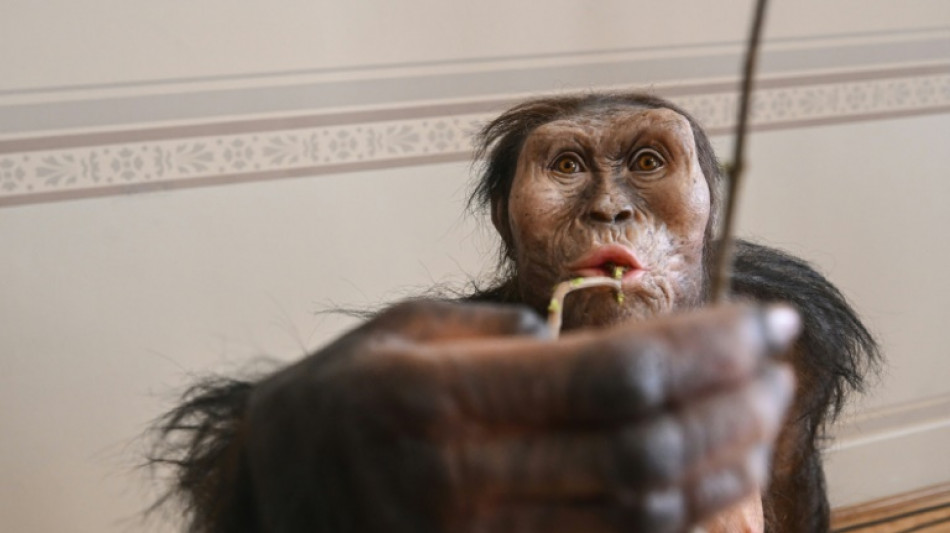
-
 De Jong joins Barca sickbay after picking up knock on international duty
De Jong joins Barca sickbay after picking up knock on international duty
-
BRICS leaders denounce protectionism, tariff 'blackmail'

-
 Argentina's Milei to join far-right rally in Madrid
Argentina's Milei to join far-right rally in Madrid
-
Germany's VW, China's BYD face off at Munich auto show

-
 Teen arrested after two Turkish police officers shot dead
Teen arrested after two Turkish police officers shot dead
-
Lawyers caught in Turkey's crackdown on opposition

-
 Private hometown funeral for Italian fashion legend Armani
Private hometown funeral for Italian fashion legend Armani
-
Nepal police open fire, killing 17 protesting social media ban

-
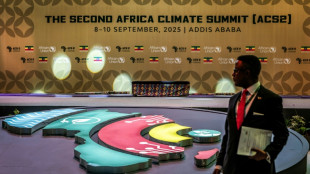 African Union chief calls for more 'climate justice' funds
African Union chief calls for more 'climate justice' funds
-
UN nuclear watchdog says hopes for inspections deal with Iran soon

-
 Trump hails cancelation of award ceremony for Tom Hanks
Trump hails cancelation of award ceremony for Tom Hanks
-
VW unveils affordable EVs to take on Chinese rivals

-
 Excessive debt 'life-threatening' for France, PM tells parliament
Excessive debt 'life-threatening' for France, PM tells parliament
-
Tri-series win confidence builder for Pakistan, says coach Hesson

-
 Leverkusen name Hjulmand as Ten Hag replacement
Leverkusen name Hjulmand as Ten Hag replacement
-
Appeal trial of France's Le Pen to begin in January 2026: court

-
 Palestinian gunmen shoot dead six people in east Jerusalem attack: foreign minister
Palestinian gunmen shoot dead six people in east Jerusalem attack: foreign minister
-
At least 16 killed in Nepal protest over social media ban

-
 International court postpones hearing on Duterte's drug crackdown
International court postpones hearing on Duterte's drug crackdown
-
New Banksy artwork challenges UK's protest crackdown
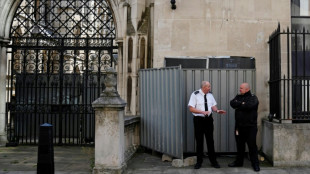
-
 At consumer tech show, German firms fret about US tariffs
At consumer tech show, German firms fret about US tariffs
-
At least 10 killed in Nepal protest over social media ban

-
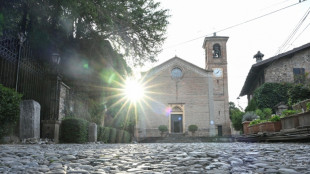 Hometown funeral for Italian fashion legend Giorgio Armani
Hometown funeral for Italian fashion legend Giorgio Armani
-
Stocks rise tracking political upheaval, data

-
 Teen arrested after 2 police shot dead near Turkey's Izmir
Teen arrested after 2 police shot dead near Turkey's Izmir
-
Millions hit as London Underground train workers strike

-
 Trial of doctor accused of poisoning 30 patients begins in France
Trial of doctor accused of poisoning 30 patients begins in France
-
Thai ex-PM Thaksin lands in Bangkok ahead of crucial court date

-
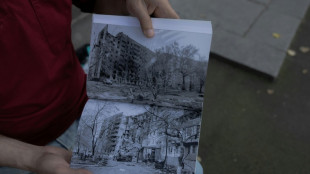 Ukraine's Donbas refugees don't want to be sacrificed for peace
Ukraine's Donbas refugees don't want to be sacrificed for peace
-
Norway votes in tight election where war and tariffs loom large

-
 Germany's US exports hit four-year low as tariffs bite
Germany's US exports hit four-year low as tariffs bite
-
Israel warns Hamas to surrender or face 'annihilation'

-
 Erasmus makes seven Springboks changes for All Blacks rematch
Erasmus makes seven Springboks changes for All Blacks rematch
-
French doctor accused of poisoning patients sounds defiant ahead of trial

-
 Controversy stalks sparkling sprint talent Richardson
Controversy stalks sparkling sprint talent Richardson
-
Ariana Grande wins top MTV Video Music Award

-
 'Last generation': Greek island's fading pistachio tradition
'Last generation': Greek island's fading pistachio tradition
-
China 'elephant in the room' at fraught Pacific Islands summit

-
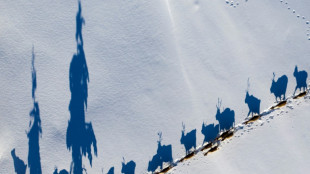 Sweden's Sami fear for future amid rare earth mining plans
Sweden's Sami fear for future amid rare earth mining plans
-
'Trump Whisperer' ex-minister joins Japan PM race

-
 Bills rally to stun Ravens, Stafford hits milestone in Rams win
Bills rally to stun Ravens, Stafford hits milestone in Rams win
-
ICC to hear war crimes charges against fugitive warlord Kony

-
 Trump warns foreign companies after S.Korean workers detained
Trump warns foreign companies after S.Korean workers detained
-
Asian shares rise as Japan politics weigh on yen

-
 Norway votes in election influenced by wars and tariff threats
Norway votes in election influenced by wars and tariff threats
-
French parliament set to eject PM in blow to Macron

-
 ECB set to hold rates steady with eye on France crisis
ECB set to hold rates steady with eye on France crisis
-
Russell Crowe shaken by Nazi role in festival hit 'Nuremberg'

-
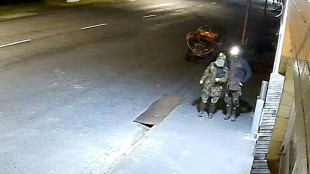 New Zealand fugitive father killed in shootout with police
New Zealand fugitive father killed in shootout with police
-
Trump threatens Russia with sanctions after biggest aerial attack on Ukraine

| RBGPF | 5.95% | 76 | $ | |
| RYCEF | 1.08% | 14.78 | $ | |
| CMSC | 0.08% | 24.25 | $ | |
| AZN | -0.9% | 80.97 | $ | |
| SCS | -0.38% | 17.075 | $ | |
| RIO | -0.49% | 63.655 | $ | |
| GSK | -1.66% | 39.84 | $ | |
| RELX | 0.24% | 47.165 | $ | |
| NGG | -0.31% | 69.88 | $ | |
| BTI | 0.13% | 56.095 | $ | |
| VOD | -0.3% | 11.775 | $ | |
| BCC | -1.75% | 88.47 | $ | |
| JRI | 0.77% | 13.725 | $ | |
| CMSD | -0.08% | 24.44 | $ | |
| BCE | -1.75% | 24.295 | $ | |
| BP | 0.09% | 33.96 | $ |

Human ancestors making 'bone tech' 1.5 million years ago, say scientists
Our ancestors were making tools out of bones 1.5 million years ago, winding back the clock for this important moment in human evolution by more than a million years, a study said Wednesday.
Ancient humans -- also called hominins -- such as the robust Australopithecus are known to have used fragments of bones to dig up tubers from termite mounds.
Even today our closest living relative, chimpanzees, use sticks in a similar way to dig out termites for a tasty treat.
And more than two million years ago, hominins were using crude stone tools in Tanzania's Olduvai Gorge, one of the world's most important prehistoric sites.
But there were no known examples of anyone systematically making bone tools more than 500,000 years ago -- until now.
At Olduvai, a Spanish-led team of researchers found 27 tools made out of the leg and arm bones of big mammals, mainly elephants and hippos.
The discovery "sheds new light on the almost unknown world of early hominin bone technology," they wrote in a study in the journal Nature.
To the untrained eye, the tools might seem like random bits of bone.
But for the researchers, they are proof of the remarkable cognitive abilities of our distant ancestors, showing they were capable of choosing the appropriate material and fashioning it for their needs.
"There is a clear desire to change the shape of the bone to turn them into very heavy, long tools," Francesco d'Errico, an archaeologist at France's Bordeaux University and study co-author, told AFP.
The unknown hominins used rocks as hammers to shape the bones. The resulting tools ranged from 20 to 40 centimetres (eight to 15 inches) long, some weighing up to a kilo.
"In some cases there are even notches in the middle of the bone, possibly so they could hold it better in their hands," d'Errico said.
The big, pointy tools are thought to have been used to butcher the carcasses of large animals.
- From axes to needles -
At the time, stone tools were being made in a far more rudimentary manner.
Very few large stone tools have been found at Olduvai, d'Errico said, possibly because the quartz available at the site was not well-suited to the difficult job of cutting up big animals.
It was the Acheulean culture, which was emerging in Africa at around the same time, that first cut stones into hand axes, also called bifaces.
This invention represented a major advance, making it possible for ancient humans to properly slice or skin their prey.
"The hypothesis of the study is that the bone-cutting at Olduvai is an original invention, during a moment of transition to bifaces," d'Errico said.
According to this theory, the bone techniques developed at Olduvai disappeared from the planet for a million years.
It would eventually reappear in places such as the area of modern-day Rome, where a lack of good big rocks spurred hominins to carve elephant bones into hand axes.
It is also possible that the techniques continued throughout the years "but these bones have not been properly identified in other archaeological sites," d'Errico said.
As the human line evolved, so did the sophistication of the tools we carved out of bone.
For example, the first needles with eyes were made from bone in China and Siberia, only arriving in Europe around 26,000 years ago, d'Errico said.
But that is another "very long story," he added.
S.Gregor--AMWN

